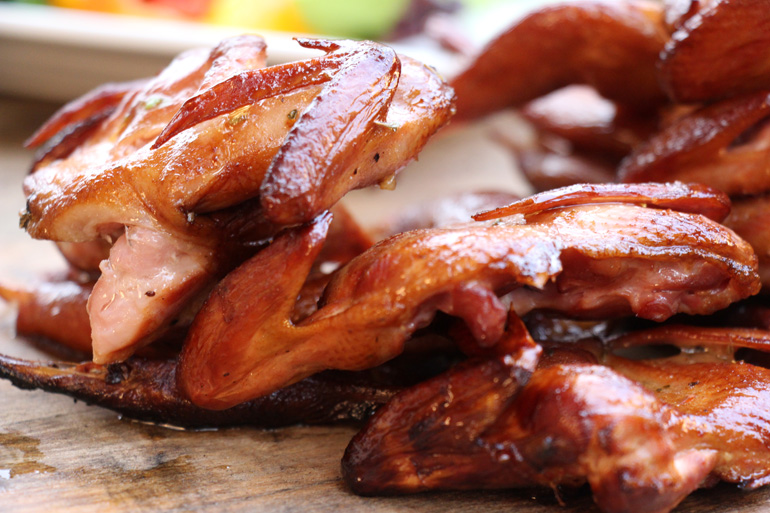How to Grill a Quail (and have it taste moist and delicious)
You can usually tell if people who take credit for recipes have actually prepared the recipes themselves. It’s also fairly obvious if a wild game recipe was written by a non-hunter.
Not that you have to be a hunter to know how to prepare wild game. I’ve never killed a cow, but I can cook one, although preferably not the whole animal at once. If the recipe author mentions “catching” wild game, he or she doesn’t hunt. OK, maybe they’re trappers, but I don’t think that’s the case.

You can usually tell if people who take credit for recipes have actually prepared the recipes themselves. It’s also fairly obvious if a wild game recipe was written by a non-hunter. Not that you have to be a hunter to know how to prepare wild game. I’ve never killed a cow, but I can cook one, although preferably not the whole animal at once. If the recipe author mentions “catching” wild game, he or she doesn’t hunt. OK, maybe they’re trappers, but I don’t think that’s the case. When it comes to delicate upland game birds like quail, be very suspicious if the recipe instructions include, “Cook until the juices run clear.” A quail is not a chicken. There…we got that out in the open.

If your quail is dry, it’s your own fault. Perhaps you read a recipe that instructed you to cook it too long. Or maybe you are afraid of your meat after hearing all the stories in the news about rampant food-borne illnesses like salmonella, mad cow disease and E.coli. What? I’m not stating that we shouldn’t take ordinary precautions when we’re in the kitchen. Avoiding cross-contamination of foods, storing foods properly and cooking the ones that are risky to proper safe temperatures is super important. When it comes to chicken, make sure that it is cooked to a safe temperature of 165 degrees at the thickest part of the thigh. Many of us go well beyond the safe temperature, roast our barnyard birds to 185 degrees or more and wonder why they’re dry. But a quail is not a chicken and, if you cook a quail to 165 degrees, it can be dry and juiceless unless you take a few steps before grilling to add moisture to the raw bird.

If you pack a few quail around in a game bag for a few hours on a warm fall day, you’ve probably noticed that they don’t smell all that appetizing when it’s time to clean them. One of the properties that quail do share with chickens is that, if you pack either of them around against your hot, sweaty body while you follow dogs around all morning, they are not going to smell good when you clean them. Plan ahead and keep a cooler with ice handy in the truck. From time to time, drop off your quail in the cooler so that they can be cooled quickly. As soon as possible, get them plucked or skinned, cleaned and rinsed and properly refrigerated or frozen.
If you follow this blog, you’ll know that I’m a fan of brining waterfowl and game birds. Placing your cleaned quail into a simple brine (1/2 gallon water mixed with 1/2 cup coarse salt) for a few hours will remove any trace blood, add moisture and make them a bit more forgiving if you happen to cook them a little too long. Once brined, rinse with cold water, pat dry and give them a good soak for several hours in a mixture of olive oil, garlic, salt and pepper. If you want to add more flavors, that’s fine. The olive oil will add fat to and otherwise extremely lean bird and the salt, pepper and garlic adds flavor.

Shake off the excess oil and place the quail on a medium heat grill. You don’t want the grill to be screaming hot or the quail will burn quickly on the outside as the olive oil flares up. Take your time, but not too long. Once they are browned on one side, flip them over and brown the other side. When done, the meat at the inside of the thigh joint will still be just barely pink, but not raw. As the come off the grill, I like to place them snugly into the smallest cooler I have on hand. If there is any air space between the quail and the lid, place some foil on top of the quail and a clean dry towel over the foil to help keep the heat in. Close the lid and let them steam for 20 minutes or so. They will continue to cook, but will also retain their moisture and be moist and juicy…like a chicken.




